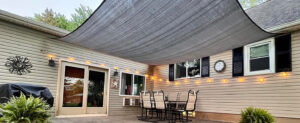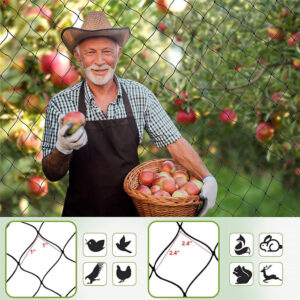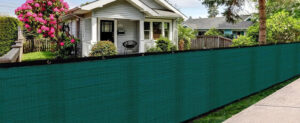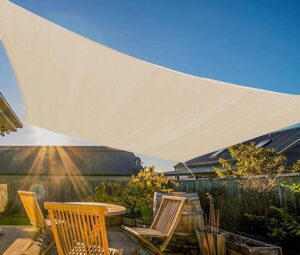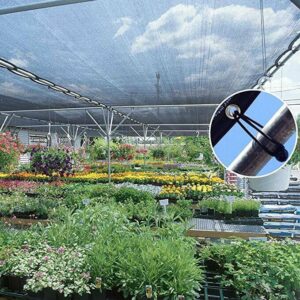Contact Us: [email protected] WhatsApp: +86-1365-3417-367
Introduction
Decorative screening for gardens is an effective way to enhance privacy, add aesthetic appeal, and create a defined space in your outdoor area. With various materials and designs available, decorative screens can transform your garden into a stylish and functional retreat. This comprehensive guide will cover everything you need to know about decorative screening for gardens, including types of screens, design ideas, installation tips, and more.
What is Decorative Screening for Gardens?
Decorative screening involves using various materials to create barriers that provide privacy, shade, and an aesthetic boost to your garden. These screens are not just functional; they also serve as stylish elements that enhance the overall look of your outdoor space. Decorative screening for gardens can be made from materials such as wood, metal, bamboo, and even living plants, each offering unique benefits and characteristics.
Benefits of Decorative Screening
- Privacy: Screens create a private sanctuary, blocking views from neighbors or passersby.
- Aesthetics: Adds visual interest and enhances the garden’s design.
- Shade: Provides relief from the sun, creating comfortable shaded areas.
- Wind Protection: Acts as a barrier against strong winds, protecting delicate plants.
- Noise Reduction: Helps reduce noise from surrounding areas, creating a more peaceful environment.
Decorative screens are versatile and can be customized to fit any garden style, whether you prefer a modern, minimalist look or a more rustic and natural design.
Types of Decorative Screening
Decorative screening for gardens comes in various types, each offering unique benefits and aesthetics. Choosing the right type depends on your garden’s style, your budget, and the specific needs of your outdoor space. Let’s explore the most popular types of decorative screening: wooden screens, metal screens, bamboo screens, and living screens.
Wooden Screens
Wooden screens are a classic choice for garden screening, offering a natural and versatile look that complements various garden styles. They are available in different types of wood, such as cedar, pine, and teak, each providing distinct benefits.
Advantages:
- Aesthetic Appeal: Provides a warm, natural appearance that blends well with garden landscapes.
- Customizable: Can be painted, stained, or left in their natural state to match your garden’s theme.
- Versatile: Available in various designs, from simple slats to intricate lattice patterns.
Disadvantages:
- Maintenance: Requires regular upkeep to prevent rot, pests, and weather damage.
- Cost: High-quality wood can be expensive, especially for large areas.
Popular Wood Types
| Wood Type | Characteristics |
|---|---|
| Cedar | Naturally resistant to rot and insects, durable, and weather-resistant. |
| Pine | Affordable, easy to work with, but less durable than cedar and requires regular treatment. |
| Teak | Extremely durable, resistant to water and insects, but more expensive. |
Maintenance Tips
- Sealing and Staining: Regularly apply sealant or stain to protect the wood from moisture and UV damage.
- Cleaning: Clean the screens periodically to remove dirt, mold, and mildew.
- Inspection: Check for signs of damage, such as cracks or rot, and address them promptly.
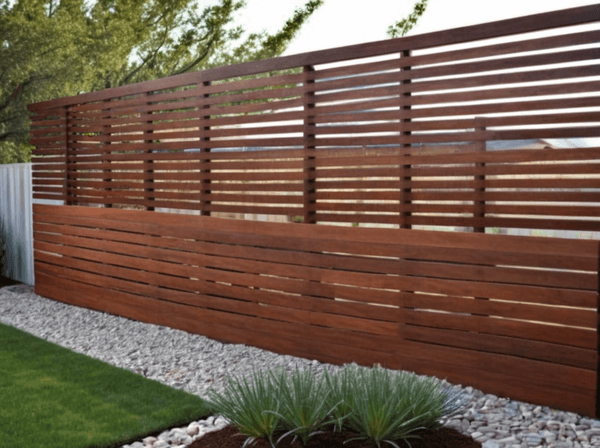
Metal Screens
Metal screens are gaining popularity for their modern and sleek appearance. They are often made from materials like aluminum, steel, or corten steel and can be designed with intricate patterns that add a contemporary touch to your garden.
Advantages:
- Durability: Highly durable and can withstand harsh weather conditions without significant wear and tear.
- Low Maintenance: Requires minimal upkeep compared to wood.
- Modern Aesthetic: Offers a sleek, stylish look that complements contemporary garden designs.
Disadvantages:
- Cost: Can be more expensive than other materials, especially for custom designs.
- Temperature: Metal can become hot in direct sunlight, which may be a concern in certain climates.
Common Metals Used
| Metal Type | Characteristics |
|---|---|
| Aluminum | Lightweight, resistant to rust, and easy to work with. |
| Steel | Strong and durable, but prone to rust if not properly treated. |
| Corten Steel | Develops a rust-like appearance over time, providing a unique, weathered look. |
Rust Prevention:
- Coatings: Apply rust-resistant coatings or paints to steel screens.
- Maintenance: Regularly inspect and touch up any areas showing signs of rust.

Bamboo Screens
Bamboo screens offer an eco-friendly and natural option for garden screening. They provide a tropical feel and are suitable for various garden styles.
Advantages:
- Sustainability: Bamboo is a fast-growing, renewable resource, making it an environmentally friendly choice.
- Aesthetic Appeal: Adds a unique, natural look that enhances the garden’s ambiance.
- Lightweight: Easy to install and move around as needed.
Disadvantages:
- Durability: Less durable than wood or metal and can degrade over time if not properly maintained.
- Maintenance: Requires regular care to prevent weather damage and fading.
Care Tips:
- UV Protection: Apply UV-resistant finishes to protect bamboo from sun damage.
- Regular Inspection: Check for signs of wear and address any issues promptly.
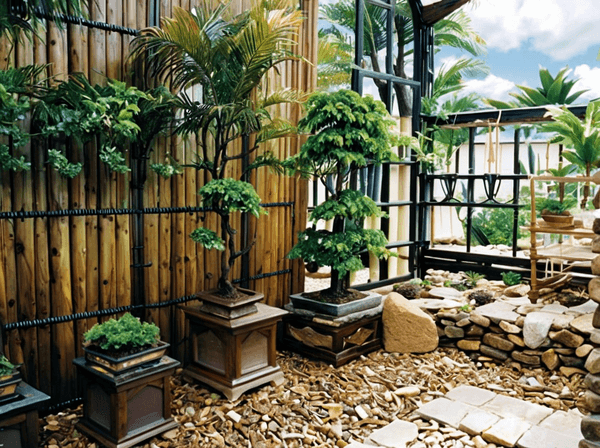
Living Screens
Living screens are made from plants, such as hedges or climbing vines, providing a green and natural barrier. They offer numerous environmental benefits and can be a beautiful addition to any garden.
Benefits:
- Biodiversity: Supports local wildlife by providing habitat and food sources.
- Aesthetic Appeal: Adds greenery and can be tailored to fit the garden’s style.
- Natural Air Filter: Plants help filter the air, improving the garden’s environment.
Maintenance Tips:
- Regular Pruning: Keep the plants well-maintained by trimming them regularly to promote healthy growth and shape.
- Watering: Ensure the plants receive adequate water, especially during dry periods.
- Choosing the Right Plants: Select plants that are well-suited to your climate and soil conditions.
| Plant Type | Characteristics |
|---|---|
| Hedges | Dense, can be shaped, provides excellent privacy. |
| Climbing Plants | Grows on trellises or structures, adds vertical interest. |
| Bamboo | Fast-growing, provides a lush, green screen. |
Living screens can be a versatile and environmentally friendly option, adding both beauty and functionality to your garden.
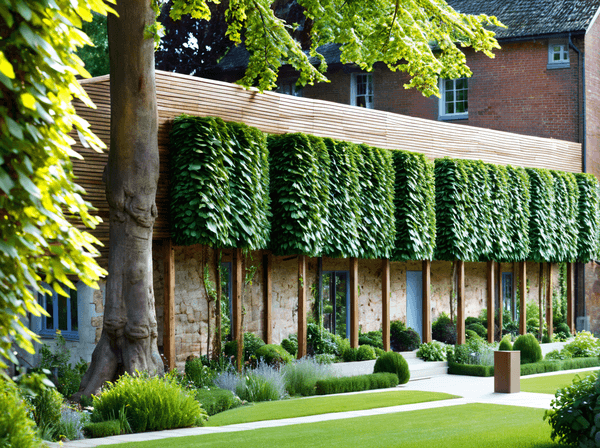
Design Ideas for Decorative Screening
Decorative screening for gardens offers a myriad of design possibilities that can transform your outdoor space into a stylish and functional retreat. Whether you prefer a modern, minimalist look or a rustic, natural aesthetic, there are design ideas to suit every taste. Here are some popular design ideas for decorative screening:
Modern and Minimalist Designs
Modern and minimalist designs focus on clean lines, simplicity, and functionality. These screens often feature geometric patterns and are made from materials like metal or treated wood.
Characteristics:
- Simplicity: Simple, uncluttered designs that emphasize function and form.
- Clean Lines: Straight edges and geometric shapes are common.
- Neutral Colors: Often use neutral colors like black, white, or grey to create a sleek, modern look.
Examples and Inspiration:
- Laser-Cut Metal Panels: Intricate patterns cut into metal sheets, offering both privacy and artistic appeal.
- Horizontal Wooden Slats: Sleek wooden slats arranged horizontally for a contemporary feel.
- Gabion Walls: Wire cages filled with stones or other materials, providing a modern and industrial look.
Rustic and Natural Designs
Rustic and natural designs use organic materials and textures to create a warm, inviting atmosphere. These screens often feature natural wood, bamboo, or woven materials.
Characteristics:
Organic Materials: Use of natural materials like wood, bamboo, and stone.
- Textured Surfaces: Rough, unpolished surfaces that enhance the natural look.
- Earthy Colors: Use of earthy tones like brown, green, and beige to blend with the natural surroundings.
Examples and Inspiration:
- Woven Willow Screens: Natural willow branches woven into panels, providing a rustic charm.
- Bamboo Fencing: Bamboo poles arranged vertically or horizontally, offering a tropical feel.
- Log Walls: Stacked logs or cut wood sections arranged to create a natural barrier.
Artistic and Custom Designs
Artistic and custom designs allow for creativity and personalization. These screens can incorporate unique patterns, colors, and materials to reflect your personal style and artistic vision.
Characteristics:
Customization: Ability to create bespoke designs tailored to your preferences.
- Unique Patterns: Use of intricate and unique patterns that stand out.
- Mixed Materials: Combining different materials like wood, metal, and glass for a one-of-a-kind look.
Examples and Inspiration:
- Mosaic Screens: Use of colorful tiles or glass pieces to create beautiful mosaic patterns.
- Carved Wood Panels: Detailed carvings in wooden panels, adding an artistic touch.
- Painted Screens: Wooden or metal screens painted with custom designs or murals.
| Design Type | Characteristics | Example Materials |
|---|---|---|
| Modern/Minimalist | Clean lines, geometric shapes, neutral colors | Metal, treated wood, gabions |
| Rustic/Natural | Organic materials, textured surfaces, earthy colors | Wood, bamboo, stone |
| Artistic/Custom | Unique patterns, mixed materials, personalized designs | Mosaic tiles, carved wood, glass |
Designing your decorative screens can be a fun and creative process. Whether you opt for modern simplicity, rustic charm, or artistic flair, there’s a design to suit every garden style and preference.
How to Choose the Right Decorative Screen for Your Garden
Choosing the right decorative screen for your garden involves several considerations, including your garden’s style, privacy needs, budget, and maintenance preferences. Here’s a step-by-step guide to help you make the best choice.
Assessing Your Garden’s Needs
Start by assessing what you need from your decorative screen. Consider the following factors:
- Privacy: Do you need a screen to block out neighbors or passersby?
- Wind Protection: Do you need a screen to protect delicate plants from strong winds?
- Shade: Are you looking to create shaded areas for relaxation?
Tip: Make a list of your top priorities to help narrow down your options.
Matching the Screen with Your Garden’s Style
Ensure the screen complements your garden’s overall style. Here are some common garden styles and suitable screening options:
- Modern Gardens: Opt for sleek, geometric designs using materials like metal or treated wood.
- Cottage Gardens: Choose rustic, natural materials like woven willow or wooden lattice panels.
- Tropical Gardens: Bamboo screens or living screens with lush, climbing plants work well.
- Urban Gardens: Consider space-saving designs like vertical gardens or compact metal screens.
Budget Considerations
Your budget will significantly influence your choice of materials and designs. Here’s a quick overview of cost considerations for different types of screens:
| Material | Cost Range (per square foot) | Maintenance Costs |
|---|---|---|
| Wooden Screens | $10 - $30 | Moderate |
| Metal Screens | $20 - $50 | Low |
| Bamboo Screens | $5 - $15 | Low |
| Living Screens | Varies depending on plants | Moderate to High |
Tip: Factor in both initial costs and long-term maintenance expenses when budgeting for your decorative screen.
Durability and Maintenance Factors
Different materials require varying levels of maintenance and offer different durability. Consider how much time and effort you’re willing to invest in maintaining your screens.
- Wooden Screens: Require regular sealing and staining to prevent rot and pests.
- Metal Screens: Generally low maintenance but may require rust prevention treatments.
- Bamboo Screens: Need UV protection and moisture control.
- Living Screens: Require regular pruning, watering, and care depending on the plant species.
Tip: Choose a material that fits your maintenance preferences and local climate conditions.
Additional Considerations
- Local Regulations: Check local building codes and regulations regarding garden structures and privacy screens.
- Environmental Impact: Consider the sustainability of your chosen materials. Bamboo and living screens are eco-friendly options.
- Customization: If you want a unique design, look for options that allow for customization, such as laser-cut metal panels or carved wood.
Choosing the right decorative screen for your garden is a balance between functionality, aesthetics, and practicality. By carefully considering your needs and preferences, you can find the perfect screen to enhance your garden’s beauty and privacy.
Installation Tips for Decorative Screening
Proper installation is crucial to ensure that your decorative screening is stable, durable, and looks great in your garden. Here are some detailed tips and step-by-step instructions to help you install various types of decorative screens effectively.
Tools and Materials Required
Before starting, gather the necessary tools and materials for your installation. Here’s a general list that can be adapted depending on the type of screen you’re installing:
Tools:
- Measuring tape
- Level
- Drill and drill bits
- Screws and bolts
- Screwdriver
- Saw (for cutting materials to size)
- Shovel (for digging post holes)
- Concrete mix (for securing posts)
- Hammer
- Safety gear (gloves, safety glasses, etc.)
Materials:
- Decorative screens (wood, metal, bamboo, etc.)
- Posts or frames (if needed)
- Brackets and supports
- Sealant or paint (for finishing touches)
- Ground stakes (for additional stability)
- Step-by-Step Installation Guide
Step-by-Step Installation Guide
Wooden Screen Installation
1. Plan and Measure:
- Determine the exact location and dimensions for your screen.
- Use a measuring tape to mark where the posts will go, ensuring they are evenly spaced.
2. Prepare the Posts:
- Dig holes for the posts, ensuring they are deep enough to provide stability (typically 1/3 of the post’s length).
- Place the posts in the holes and fill with concrete. Allow the concrete to cure completely.
3. Attach the Screen Panels:
- Secure the wooden panels to the posts using screws or bolts. Ensure the panels are level and aligned.
- Use brackets for additional support if needed.
4. Finishing Touches:
- Apply a sealant or paint to protect the wood from weather damage.
- Inspect the installation to ensure everything is secure.
Metal Screen Installation
1. Plan and Measure:
- Decide on the placement and size of your metal screen.
- Mark the locations for the metal posts.
2. Set the Posts:
- Dig holes for the metal posts and set them in concrete. Allow the concrete to cure fully.
3. Attach Metal Panels:
- Secure the metal panels to the posts with screws or bolts, ensuring they are level and properly aligned.
- Use rust-resistant coatings if the metal is prone to rust.
4. Final Adjustments:
- Check for stability and make any necessary adjustments.
- Ensure all fastenings are tight and secure.
Bamboo Screen Installation
1. Prepare the Area:
- Clear the area where the screen will be installed.
2. Install Supports:
- Place stakes or posts at regular intervals to support the bamboo screen.
3. Attach Bamboo Poles:
- Use garden wire or ties to secure the bamboo poles to the supports. Ensure the poles are tightly bound and evenly spaced.
4. Stabilize and Secure:
- Add additional ties or supports as needed for stability.
- Treat the bamboo with UV protection to prevent sun damage.
Living Screen Installation
1. Build the Frame:
- Construct a sturdy frame using wood or metal.
2. Prepare the Soil:
- Ensure the soil where the plants will grow is healthy and well-drained.
3. Plant Selection:
- Choose appropriate plants for your living screen, such as climbing vines or hedges.
4. Planting:
- Plant the selected species along the base of the frame.
- Train the plants to grow along the frame, using ties or supports as needed.
5. Maintenance:
- Regularly prune and water the plants to encourage healthy growth and coverage.
Conclusion
Decorative screening for gardens is an excellent way to enhance privacy, add visual interest, and create distinct zones within your outdoor space. By carefully selecting the right materials, designs, and installation techniques, you can transform your garden into a private and aesthetically pleasing retreat.
If you’re ready to transform your garden with decorative screening, start by exploring the various options available. Consider your specific needs, style preferences, and budget to choose the perfect screens for your space. Don’t be afraid to get creative and think outside the box. With the right decorative screens, your garden can become a beautiful, private haven that reflects your personal style and meets your functional needs.
Investing in decorative screening is a step towards creating a garden that not only meets your privacy needs but also enhances the overall aesthetic and functionality of your outdoor space. By following the tips and ideas provided in this guide, you can achieve a stunning and effective decorative screening solution tailored to your unique garden.
Thank you for taking the time to read this comprehensive guide on decorative screening for gardens. We hope you found it informative and inspiring. Now, it’s time to put these ideas into action and create the garden of your dreams.

